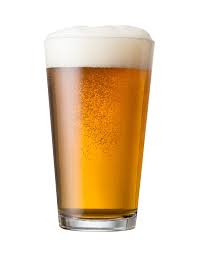
Brewing Big Beers
When it comes to brewing big beers, you want to give your yeast a fighting chance of getting the job done. Big beers call for a lot of malt, and the thicker your beer wort is, the harder it is for the yeast to repopulate and tackle the enormous amount of sugars contained in that wort. Two things you should strive for when brewing a big beer:
1. BIG HEALTHY YEAST POPULATION:
Starting with the right amount of yeast is the best course of action. Pick a suitable yeast that’s been kept in the fridge, and if you’re making any brew where your original gravity (OG) measures higher than 1.060, definitely consider using a second yeast. Some yeast strains have a higher alcohol tolerance than others, examples of these include Mangrove Jack’s M42 New World Strong Ale and most Belgian yeasts (eg. M31 or M41) are suited to brewing bigger beers. Another good tip is to hydrate, or ‘wake up’, your yeast. Hydrate your yeast by filling a sanitized container filled with a glass of tepid water, sprinkle your yeast evenly on top, cover and leave for around 20 minutes, after which time you should notice the yeast start to foam in the glass. Give it a small stir with a sanitized spoon and pitch into your wort. Alternatively, you can make a ‘yeast starter’ – we can help you with this!
2. LOTS OF OXYGEN (IN THE WORT):
Prior to fermentation, proper yeast undergoes a ‘lag phase’ in which it repopulates and prepares for the arduous task of converting that delicious sweet malt into ethanol. Have you pitched your yeast in the past and waited a while before you saw any activity in the fermenter? All yeast undergo this ‘lag phase’, some longer than others, but this can be sped up by aerating your wort. Prior to adding your yeast, stir your beer wort very aggressively with a sanitized spoon. This will introduce oxygen into the wort, greatly aiding the yeast in its repopulation phase, getting your brew fermenting quicker – therefore getting it into your glass quicker!
Have fun; be sure to try some of these techniques with your own brews. Cheers!
